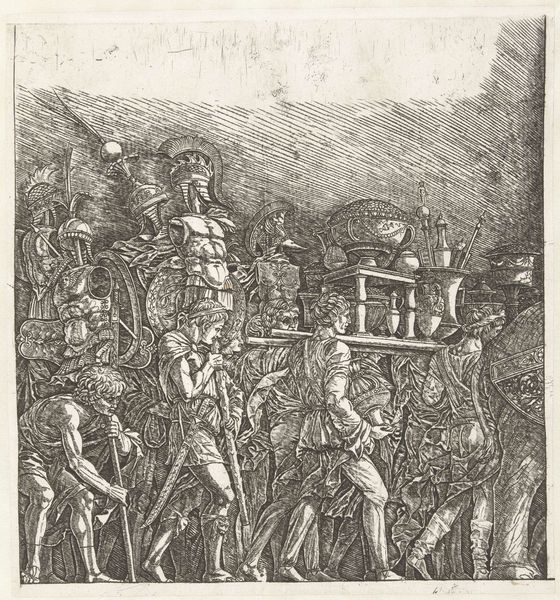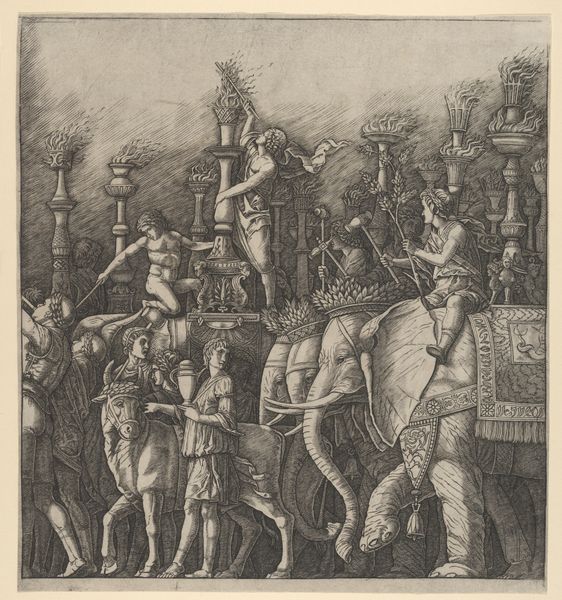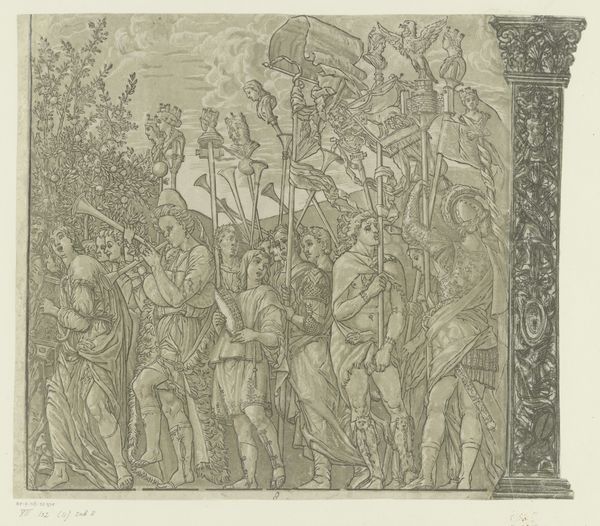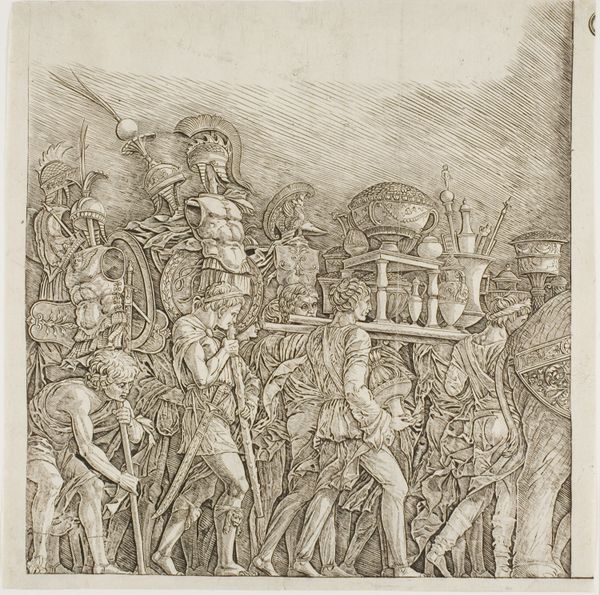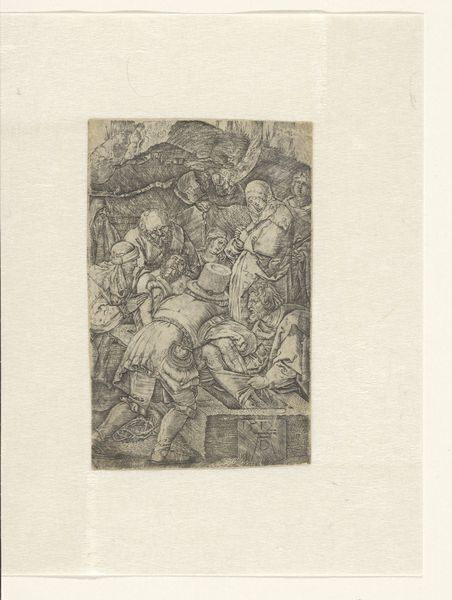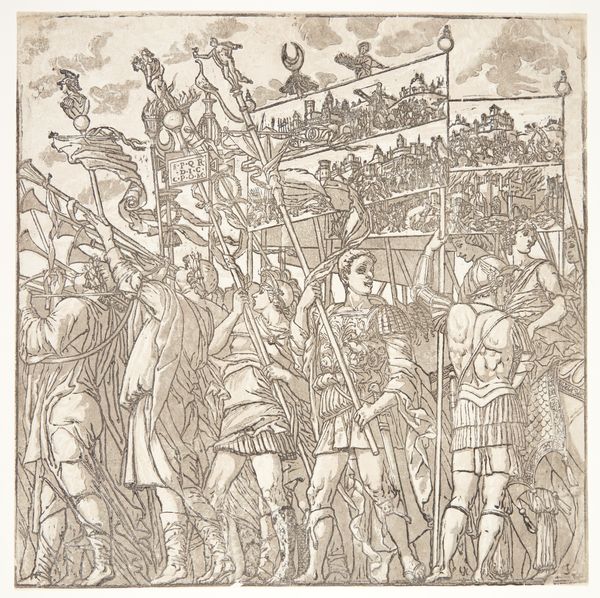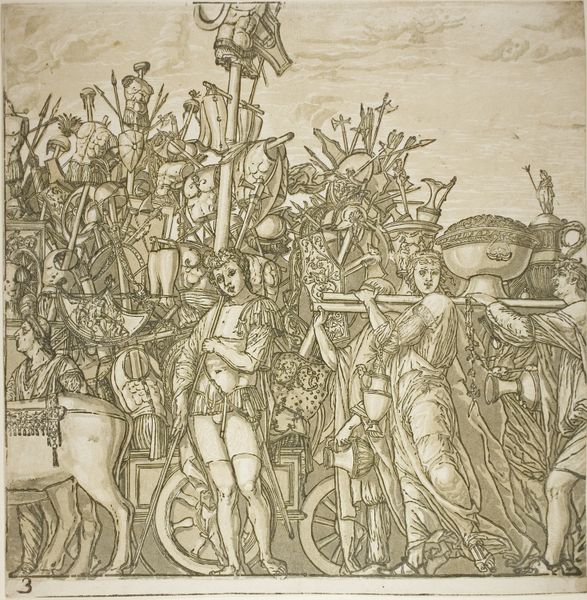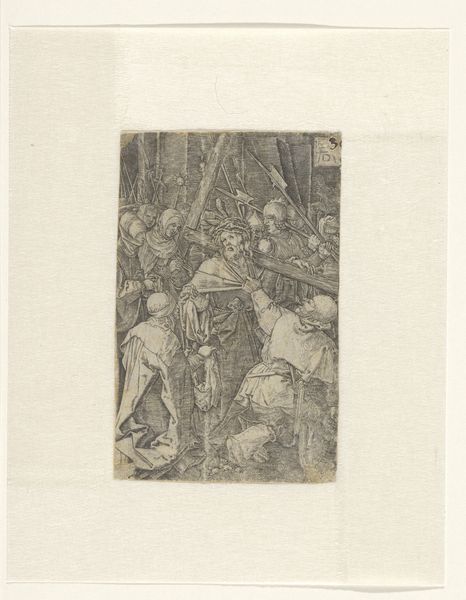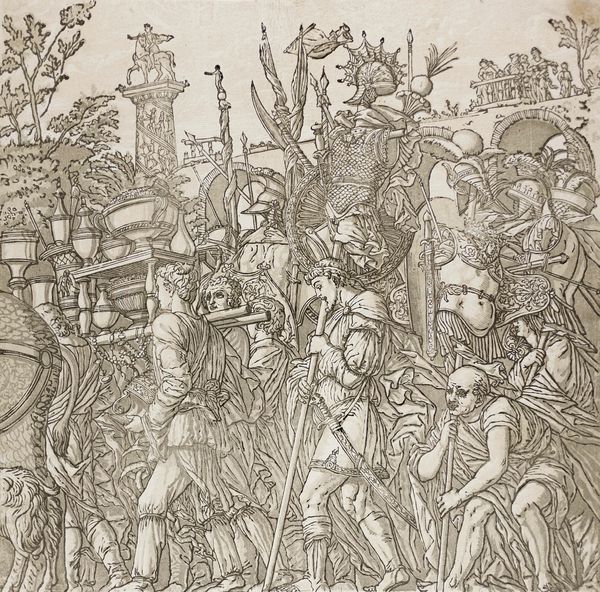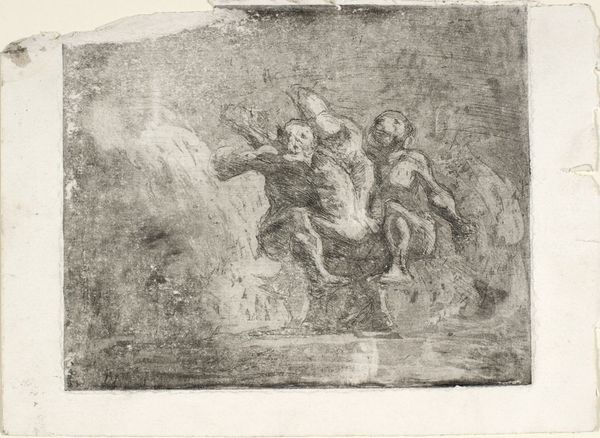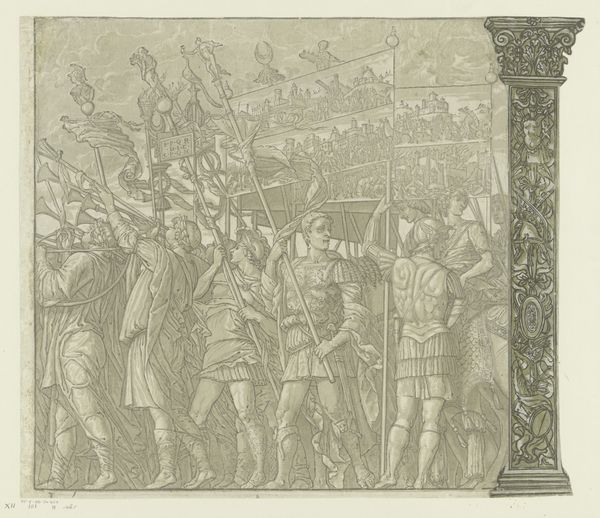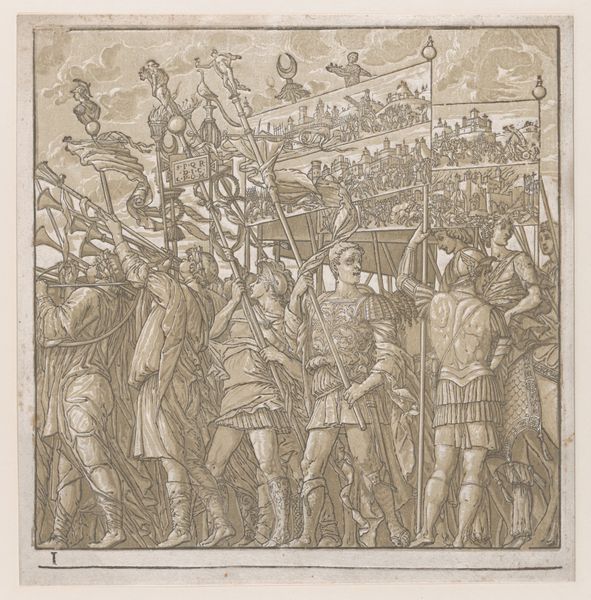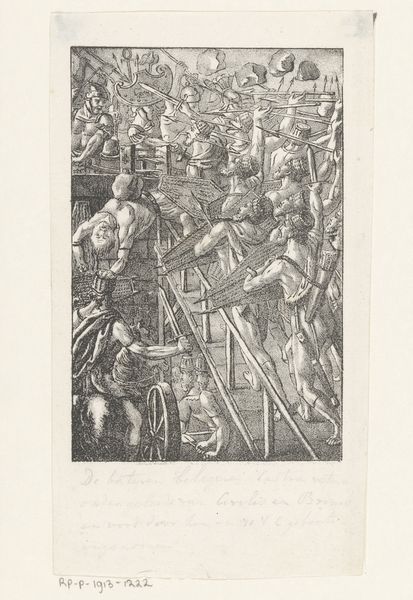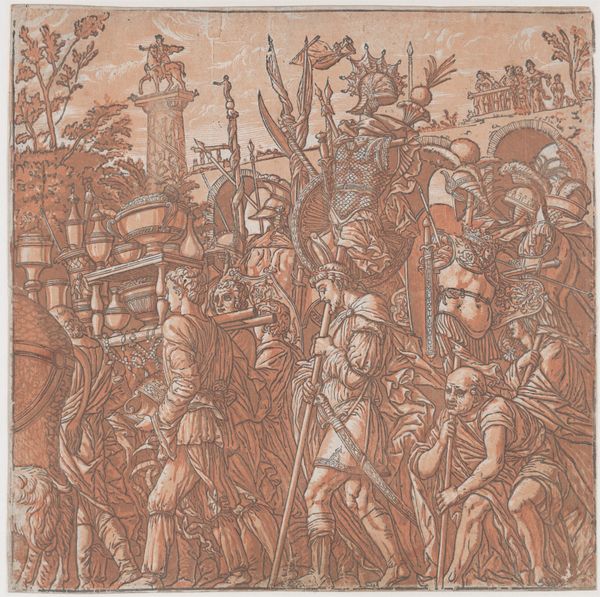
Soldaten met oorlogstrofeeën in triomftocht van Caesar en pilaster 1486 - 1492
0:00
0:00
andreamantegna
Rijksmuseum
drawing, engraving
#
drawing
#
war
#
figuration
#
ancient-mediterranean
#
line
#
history-painting
#
italian-renaissance
#
engraving
Dimensions: height 275 mm, width 314 mm
Copyright: Rijks Museum: Open Domain
Curator: Welcome. Before us is Andrea Mantegna's engraving, "Soldiers with War Trophies in the Triumph of Caesar and Pilaster," created between 1486 and 1492. It's part of the collection here at the Rijksmuseum. Editor: My initial reaction is to the striking precision of the lines! It's like looking at a miniature sculpture meticulously etched into the surface. There's an almost palpable tension, even in such a still image. Curator: Absolutely, the medium here is key. Engraving allows for that level of detail, the cross-hatching building form. And, importantly, this wasn’t a unique artwork, but reproducible, which enabled a wider dissemination of Mantegna’s artistic vision beyond the elite. Think of it in relation to the early printing press. Editor: Indeed, but let's consider its formal structure. Note how the composition guides our eye along the procession, using a rhythmic arrangement of figures and trophies. The pilaster on the right acts almost as a formal barrier, creating a proscenium arch for this triumphal scene. Curator: Exactly! Mantegna was profoundly influenced by classical antiquity; the choice of this scene underscores a reverence for Roman power and order. This pilaster is a kind of trompe-l'oeil, mimicking sculptural relief within the print medium itself, while the armor, the vessels…These details tell stories of plunder and labor that fuelled those empires. Editor: But it also elevates warfare to the realm of the aesthetic. The artistry inherent in the display of trophies is fascinating, despite the underlying violence. Curator: Consider where these trophies end up; whose homes adorn them; what they represent in that particular socio-economic hierarchy. Editor: That line is compelling. Well, thinking purely formally though, the use of light and shadow created with such simple, clean, sharp cuts amplifies the power of each element. There's such controlled depth to these soldiers, I could imagine a full story right away. Curator: A very different purpose and interpretation to contemporary printmaking. It's a powerful lens through which to examine the politics of artistic production in the Renaissance. Editor: Ultimately, these combined viewpoints help us realize that Mantegna gave such enduring form and visual rhetoric of power in his engraving of Caesar’s triumph, a story of skill. Curator: Exactly. Reflecting on the material history underscores his pivotal role in distributing classical ideals throughout society at large via this work.
Comments
No comments
Be the first to comment and join the conversation on the ultimate creative platform.
